Exhibition place:First Floor, Fashion Gallery, China Silk Museum
Exhibition time:2023.9 - 2023.11
The word “Asia” stands for “the place where the sun rises”. Asia is the most vast continent in the world, with mountains, plains, islands, and wetlands, forming a diverse natural environment and ecology.
Asia is also an important birthplace of ancient human civilization, where the civilizations of the Two River Basin, the Indus River, and the Chinese civilization were all born. In the long history of Asia, people have formed over a thousand ethnic groups and created colorful clothing civilizations. Each ethnic group has its own representative clothing style, which not only showcases different clothing cultures generated under different socio-cultural backgrounds, but also reflects the exchange, influence, and integration of clothing cultures generated by Asian people through the land and maritime Silk Road.
In September 2023, on the occasion of the 19th Asian Games being held in Hangzhou, with the support of the International Council of Museums Asia-Pacific Alliance (ICOM ASPAC), the China National Silk Museum received support from the Queen Sirikit Museum of Textiles, Thailand, the Samarkand State Museum-Reserve and State Museum of Arts of Uzbekistan to hold this exhibition. The exhibition is divided geographically into five main sections: East Asia, Southeast Asia, South Asia, Central Asia, and West Asia. It introduces the traditional clothing art of Asia from the 18th to 20th centuries. It is hoped that, through this exhibition, people from all over the world participating in the 19th Asian Games and the local residents of Hangzhou can learn about the exquisite, diverse, and hybrid clothing styles of Asia.
East Asia: The Birthplace of Silk
China, known as “Seres” in history, is the birthplace of silk and has a profound impact on the clothing culture of East Asian countries. Silk has become the most distinctive clothing fabric in East Asia.
The main characteristics of traditional East Asian clothing are wide-sleeves and broad-sizes. It attached great importance to the class and etiquette it represented. These clothes are often embroidered with auspicious patterns such as dragons and phoenixes, in colors such as deep red and yellow, symbolizing auspiciousness and blessings.
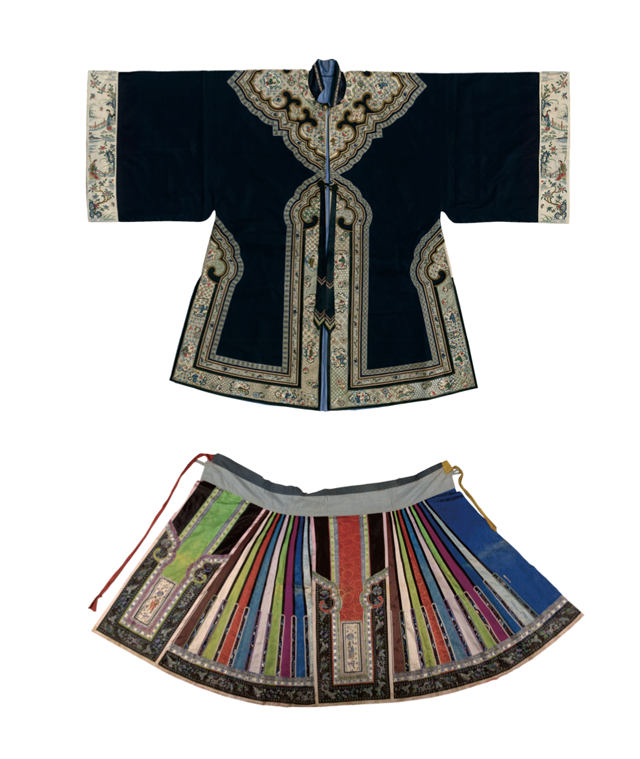
Woman’s silk top with embroidery
Pleated skirt embroidered with floral and butterfly motifs
China
Southeast Asia is located in the southeast of Asia, including two major parts: mainland and islands Southeast Asia. Due to the long-term influence of the two major civilizations of China and India, the people of this region have enjoyed different cultures and developed exceptionally rich and complex clothing traditions.
Due to Southeast Asia being located at the equator or slightly north, the climate is humid and warm. Clothing often lacks unnecessary decorations and is easy to wear. Its traditional clothing mainly consists of tube skirts and hip wrappers, which are sometimes stitched at both ends and are commonly known as sarongs.
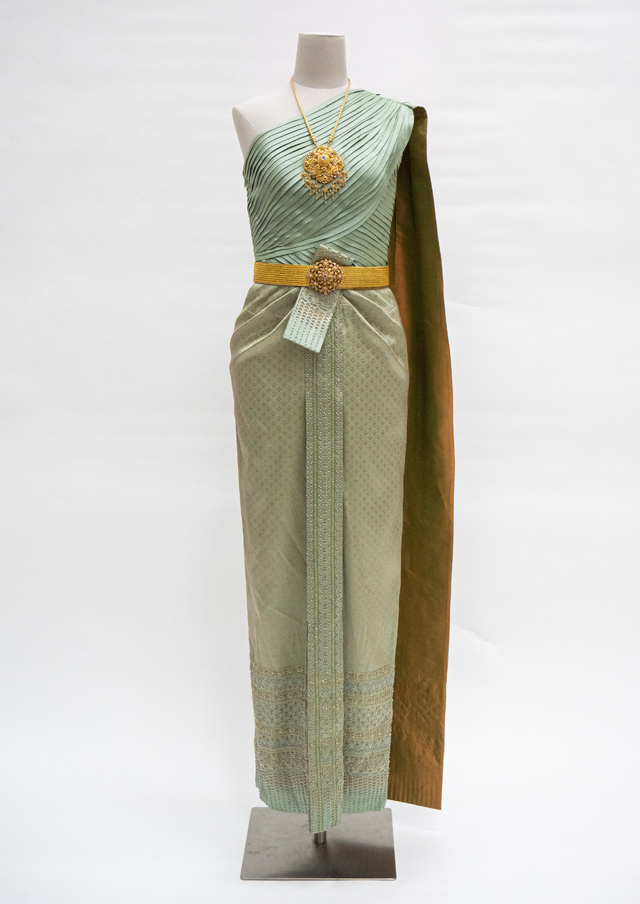
Thai Chakri Dress -Tirapan
Collection of The United Cinema Company Limiteds, Thailand
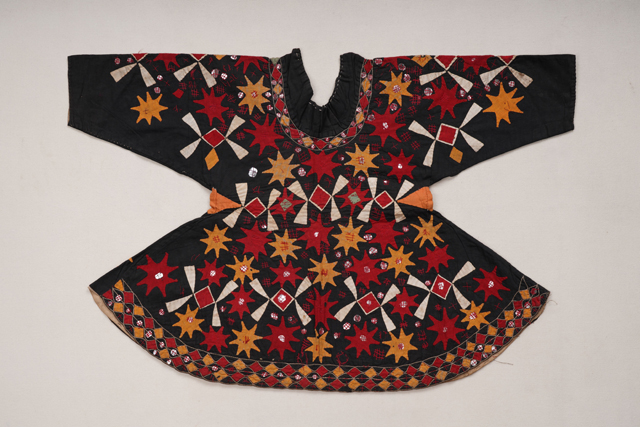
Ceremonial dress for child (halili petondu)
Central Sulawesi, Indonesia
1950s
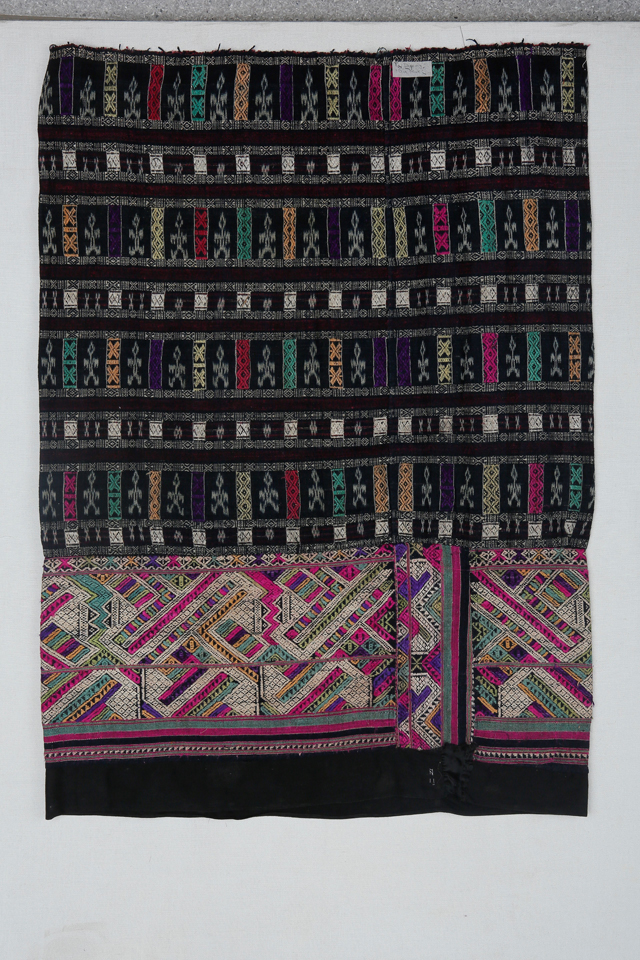
Tai Daeng Tube skirt
Sam Neua Province, Laos
20th century
Donation of Mary Connors
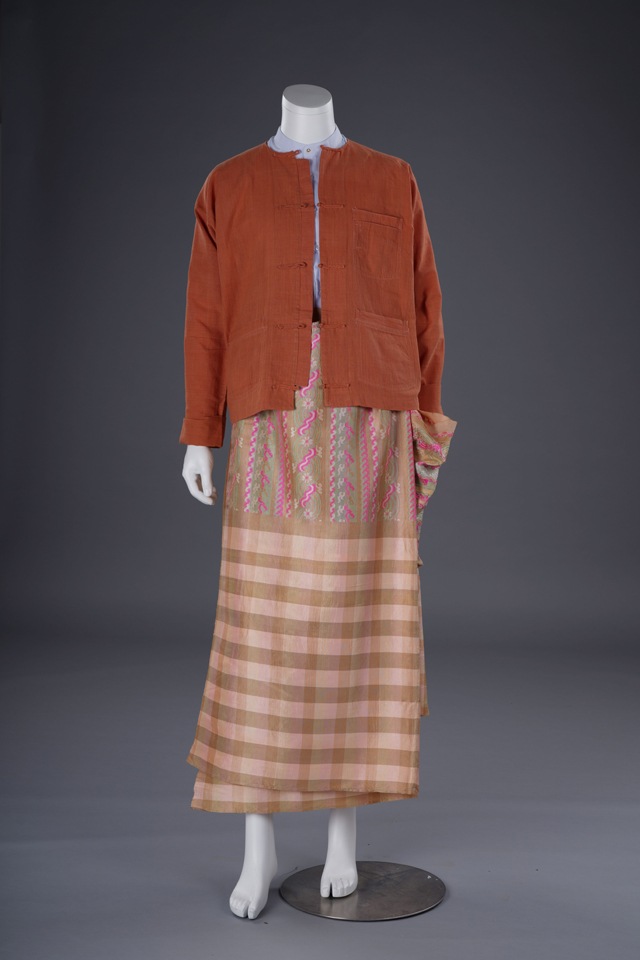
Man’s tapestry silk sarong with wave pattern with cotton shirt and jacket
Yangon, Myanmar
1940-1950s
Silk, cotton, linen
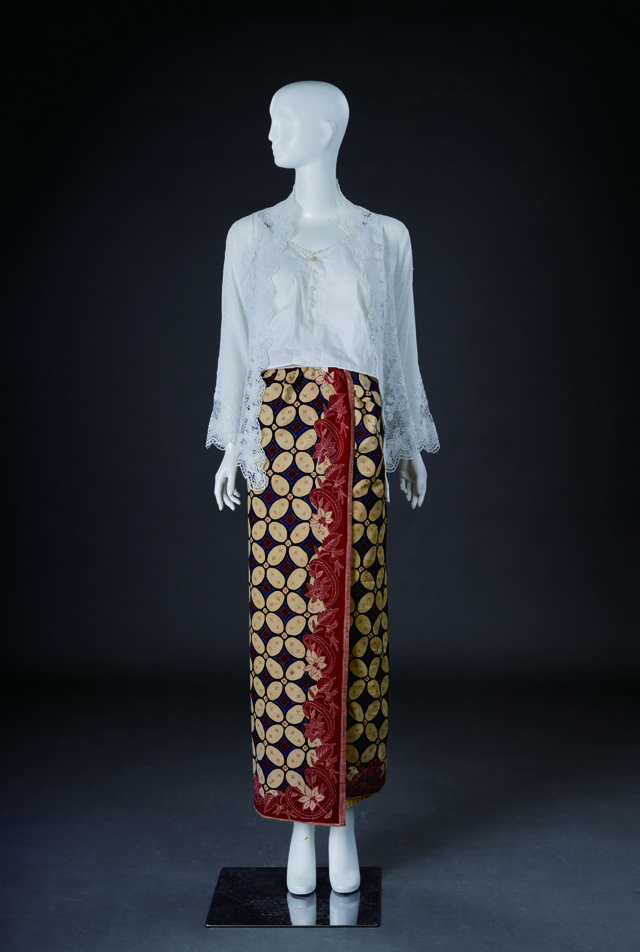
Lace blouse (kebaya) and batik sarong
Garut, Java, Indonesia
1940s
Cotton, metal
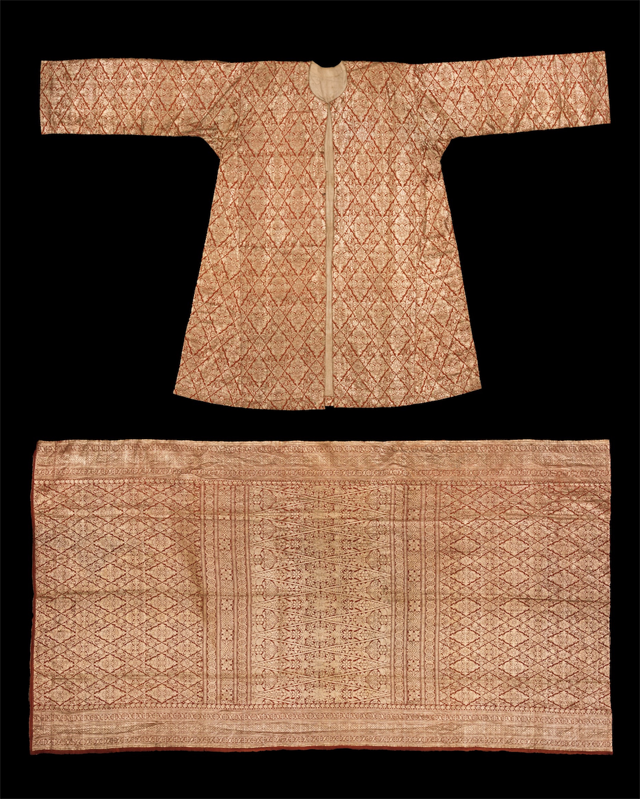
Khinkhab Baju Kurung
Negeri Sembilan, Malaysia
19th century
Silk, gilded thread, cotton
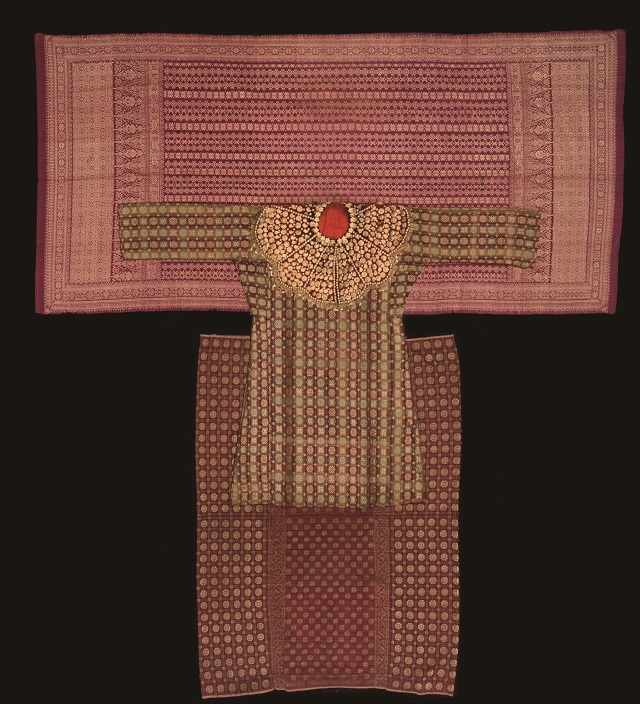
Malay Bride’s silk dress (baju kurung)
Malaysia (fond in Palembang, South Sumatra, Indonesia)
1880s
Silk, gilded thread
South Asia refers to the vast area south of the central and western sections of the Himalayas in southern Asia and between the Indian Ocean. It borders the Bay of Bengal to the east and the Arabian Sea to the west. This place has given birth to the long Indus civilization, as well as three major religions, Hinduism, Buddhism, and Jainism.
As a region of multi-ethnic integration, South Asia has developed mature textile techniques, including various resist dyeing, numerous types of embroideries, template printing, brocade, gold leaf impression, etc. with a wide variety of distinctive features and dazzling colors. But its clothing is relatively simple, as it consists of exquisite fabrics made of the different techniques mentioned above just wrapped around the body.
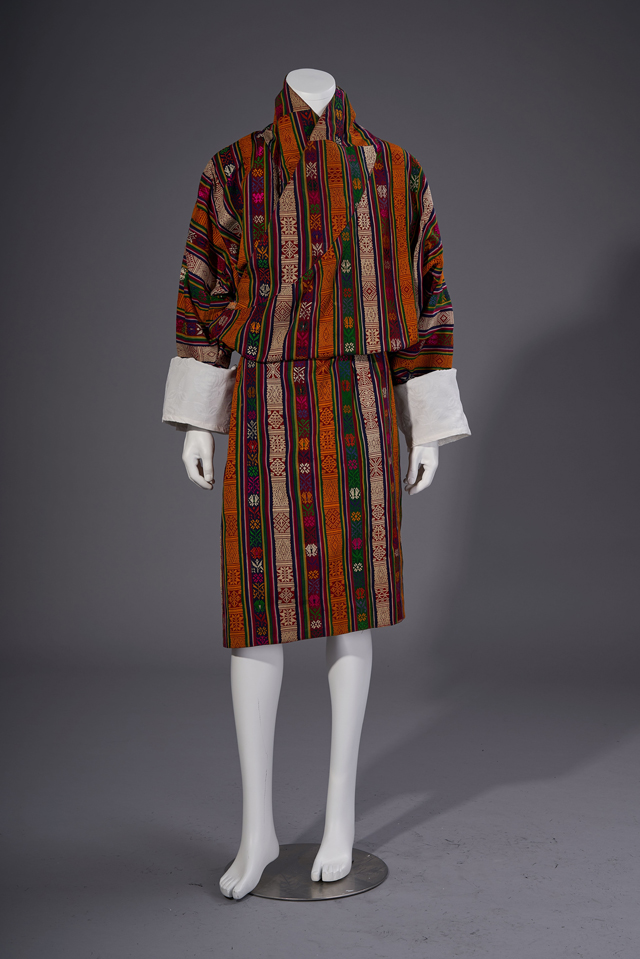
Man’s festival dress (gho)
Thimphu, Bhutan
1940s
Silk
Private Collection
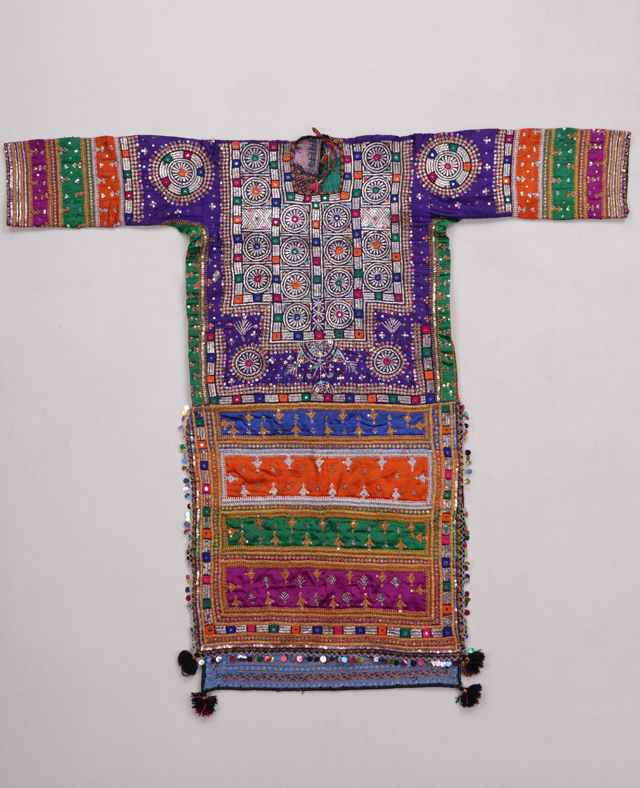
Woman’s silk tunic (chola)
Pakistan
20th century
Silk, cotton, mirror, sequin
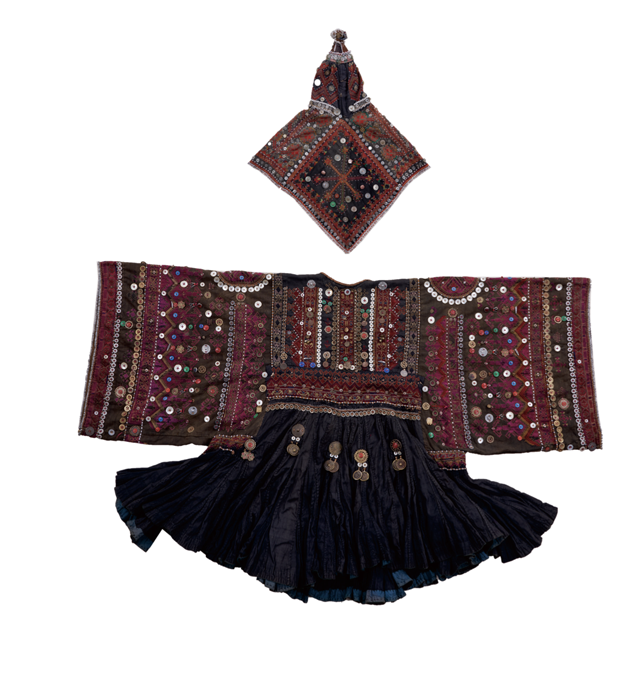
Black embroidered wedding dress (jumlo) with head dress
Afghanistan/Pakistan
Early 20th century
Cotton, button, shell, pearl
Central Asia refers to the vast inland region of the Asian continent, which is a transportation hub connecting the Eurasian continent and a necessary passage for the ancient land Silk Road. Central Asia is mostly a nomadic nation, it is particularly fond of contrasting bright colors with exotic patterns in its traditional clothing.
The clothing materials in Central Asia are mostly silk and cotton, but the styles are relatively simple, with a particular trend for large robes, known as chapan. But its making techniques are complicated and exquisite, such as velvet, ikat, embroidery, samite, etc. Its colors are also bright and vibrant, emitting a vivid and dazzling brilliance in the desert oasis.
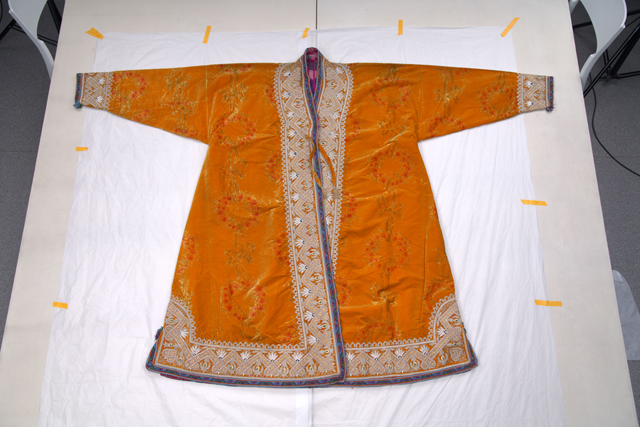
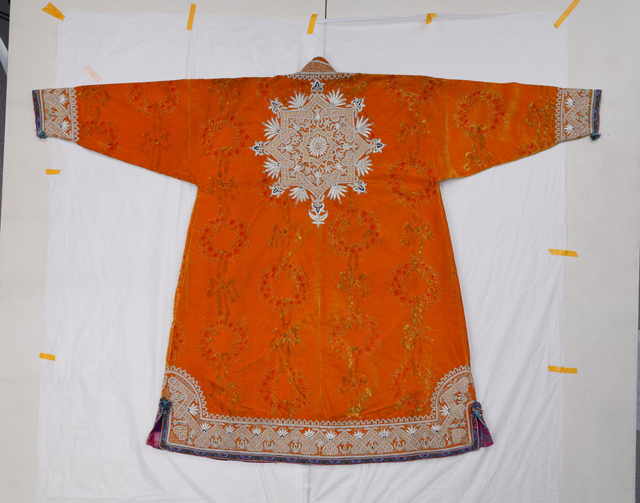
Gold-embroidered man’s robe (daukur)
Bukhara, Uzbekistan
1897
Velvet, gilded thread
Collection of State Museum of Arts of Uzbekistan
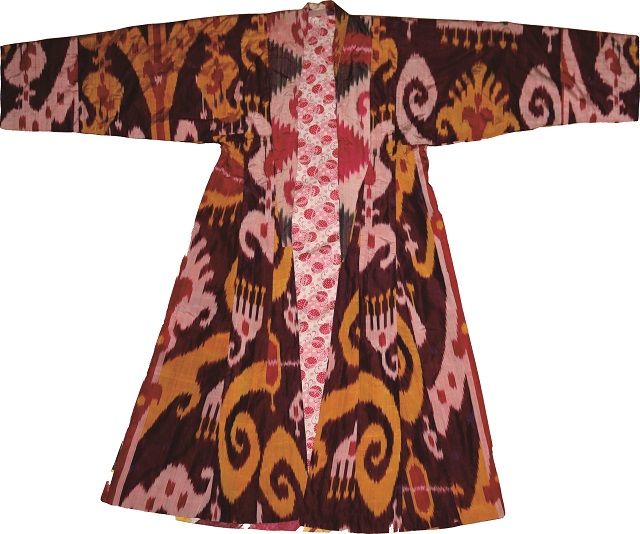
Woman’s Robe
Bukhara, Uzbekistan
Early 20thcentury
Silk, cotton
Collection of Samarkand State Museum-Reserve
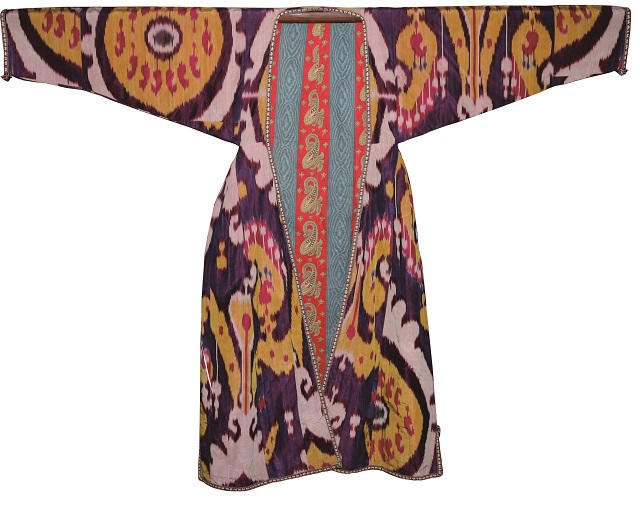
Woman’s outerwear (Kaltacha)
Bukhara, Uzbekistan
Late 19th to early 20th century
Silk, cotton
Collection of Samarkand State Museum-Reserve
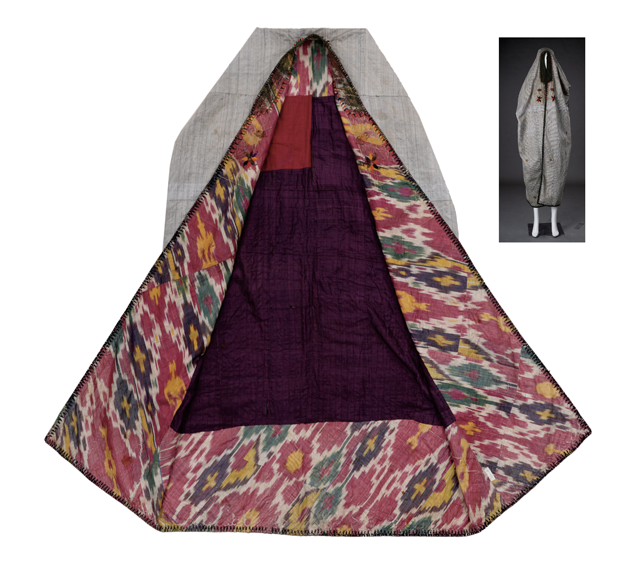
Grey ikat veiling garment (paranja)
Tajikistan
20th century
Silk, cotton
The geographical position of West Asia is from Iran to Turkey. This is one of the birthplaces of ancient human civilization and the birthplace of global and regional religions such as Islam, Christianity, and Judaism. At the same time, West Asia is a hub that connects the three continents of Asia, Europe, and Africa, as well as the Atlantic and Indian Oceans. It is also the intersection of the land and maritime Silk Road leading to Europe. So, on the one hand, the clothing culture in West Asia has become very simple due to the requirements of religious norms, especially in terms of color. And on the other hand, it is the diversity of craftsmanship and patterns brought about by the prosperity of the Silk Road. The dyeing, weaving, and embroidery process not only preserves the traditional characteristics of the place, but also adds to its exotic nature.
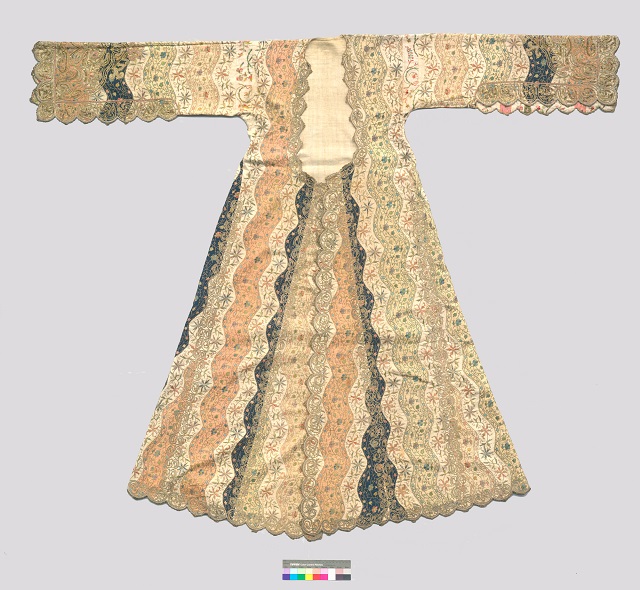
Brocade Dress (mecit entari)
Turkey
1880s–Early 19th century
Wool, silk, gilded thread
 Pay attention to us
×
Pay attention to us
×